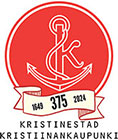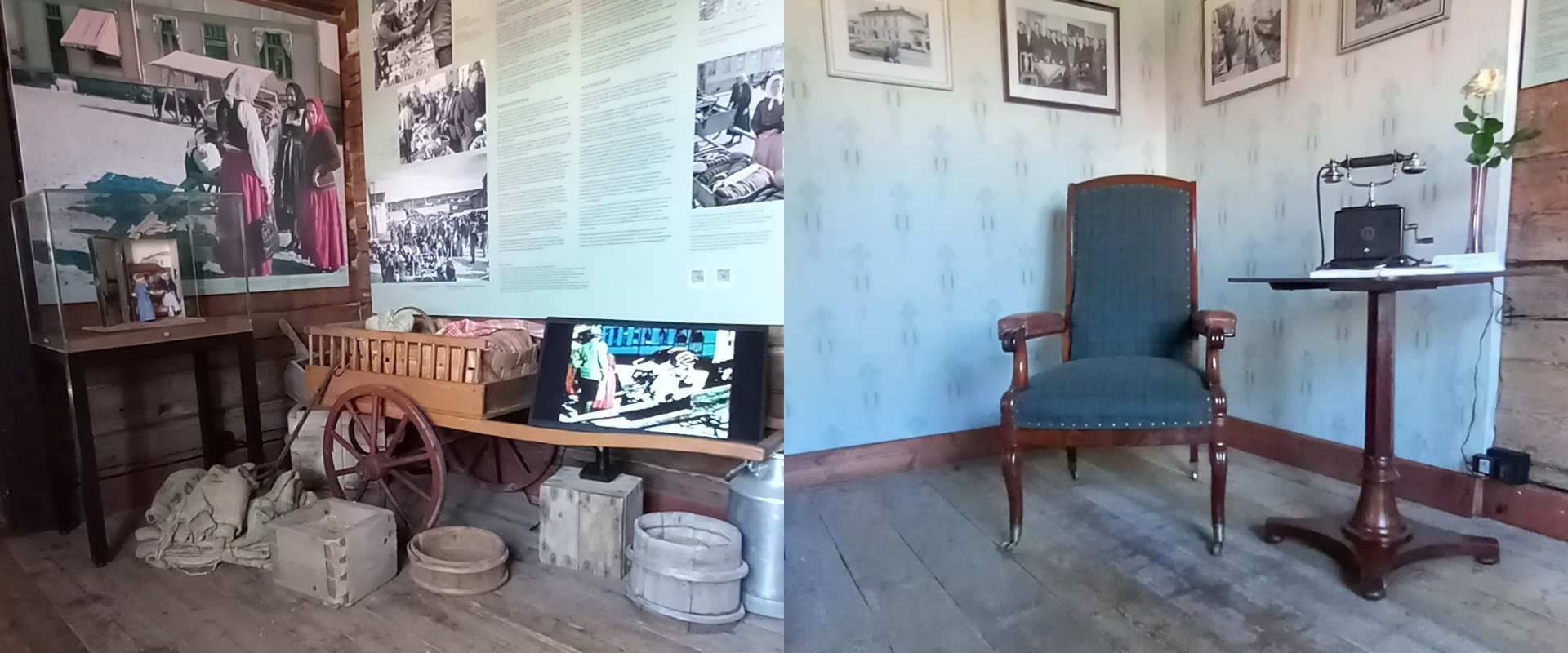Frans Henrikson in English
FRANS HENRIKSON – Businessman and benefactor
Frans Oskar Henrikson (1870–1960) was a businessman, promoter of culture and significant benefactor of Kristinestad.
Frans Henrikson was born on 2 November 1870 to a peasant family in the village of Pjelax in Närpes. In 1895, he opened a village shop in the centre of Närpes together with his brother Josef. They named the business Henrikson after their father Karl Henrik Sigg. Frans kept the name as his surname from then on.
Business affairs
In 1902, Frans Henrikson moved to Kristinestad, where he opened a wholesale and haberdashery business. In his shop, he sold both domestic and foreign goods, among others coffee, sugar and salt. He was one of the biggest salt importers in the country.
In addition to the wholesale and haberdashery business, Henrikson made real estate deals and stock investments. In 1910, he had the opportunity to buy the bankruptcy estate of distinguished businessman Alfred Carlström for a bargain price, which boosted his business considerably.
In 1917, Henrikson incorporated his businesses into a limited liability company, Ab Henrikson Oy. Four years later he dissolved the company, probably for health reasons, and moved to the Brändö residential suburb near Helsinki. Henrikson lived in Brändö until 1928 and concentrated increasingly on stock investments, but also continued to carry on business operations and importing activities both in Helsinki and Kristinestad.
Private telephone line and automobile
High-speed connections to business partners were important to Henrikson. In 1908, he was granted permission to build his own telephone line from Kristinestad to Pori. Ten years later he sold it to Kristinestad.
Henrikson owned one of the first automobiles in the Kristinestad region and had his own chauffeur from 1909 to 1916. The story goes that he once ran over a sheep with his chauffeur in the village of Merikarvia. The villagers threatened Henrikson and the chauffeur with a beating, but they managed to escape when the chauffeur fired a warning shot. Henrikson gave up his automobile after the incident.
Associations and pastimes
When Frans Henrikson moved back to Kristinestad in 1928, he concentrated on participation in associations’ activities and positions of trust. He was a member of the local government, town council and church governing board. In addition, he was a member of various committees, boards and associations, including Handelsförening, Kristinestad’s museum committee, the Lebell merchant’s house, Svenska Odlingens Vänner, Rotary and the regional board of the Swedish People’s Party.
Between 1929 and 1946, Henrikson served as the Swedish vice consul in Kristinestad. In 1951, he was awarded the title of economic counsellor.
Henrikson worked actively towards getting handicraft and cottage industry training to Kristinestad. The Swedish-language Hemslöjdsförening i Kristinestad was founded on Henrikson’s initiative, and he served as its first chairman. Training in handicrafts and cottage industries started in Hemslöjdsgården, at Rantakatu 18, in 1938 and continued until 1976. Today, Hemslöjdsgården is an active centre for handicrafts and cottage industry.
Another subject of special interest for Henrikson was the De Gamlas Hem association, where he served as the first vice chairman and later chairman for a total of 19 years. In 1947, the association opened an old people’s home “for elderly women in financially difficult circumstances”.
Henrikson was also interested in travelling and forestry. He had his own forest plot, Söderskog, which was characterised as an almost park-like model forest. Henrikson travelled to his plot by bus and collected and removed all fallen twigs and branches to make the forest appear well cared for.
Outgoing, meticulous and thrifty
Economic counsellor Frans Henrikson is described as having been particularly sociable and outgoing as well as a perfect gentleman. He had old-fashioned sophistication and politeness about him, especially in the company of women. He admitted having missed out on something because he had not married and started a family. Work had taken up all his time at an age when he should have been thinking about marriage.
Precision and thoroughness meant everything to Henrikson, which sometimes tested the patience of his circle of acquaintances. If someone spelled Henrikson’s name wrong, he scolded the person and made the wrongdoer correct the mistake and apologise.
Meticulousness was also evident in Henrikson’s home, which was always in good order and decorated with good taste. Floors were covered with genuine carpets, valuable paintings hung on the walls, and the furniture was of high quality.
In his private life, Frans Henrikson was thrifty and reserved. Rumour had it that, when alone at home, he folded the ends of the carpets up to prevent them from wearing. He also avoided using electricity and sat by the light of an oil lamp in the evenings.
Frans Henrikson’s park
Henrikson had an eye especially for all beautiful and stylish things. In 1942, he made a suggestion to establish a park in an open area on the north side of the Ulrika Eleonora church. He drew up a plan for the park and donated money to the town’s management to set it up. However, it was not until 2013 that the park became a reality.
Supporter
All his life, Frans Henrikson supported various associations and societies financially. He made one of his first donations in 1917, when for five months he deposited a certain sum of money with the town’s management to be used to feed the poor in the town.
Donations were received, for example, by the Kristinestad local hospital, the chapel association, the parish, the male choir, the Martha Association, De Gamlas Hem and Hemslöjdsgården as well as Åbo Akademi University Foundation and the country’s air defence.
The mosaic window for Kristinestad’s new church was also acquired on Henrikson’s initiative and with his financial support.
Frans Henrikson’s testamentary fund
Economic counsellor Frans Henrikson died on 21 February 1960. In his testament, he stipulated that the major part of his funds were to be directed to the Swedish Cultural Foundation in Finland for a trust fund which would bear the name Frans Henrikson’s testamentary fund. According to Henrikson’s wish, the fund supports Swedish-language education and culture in the coastal region of the Southern Ostrobothnia.


